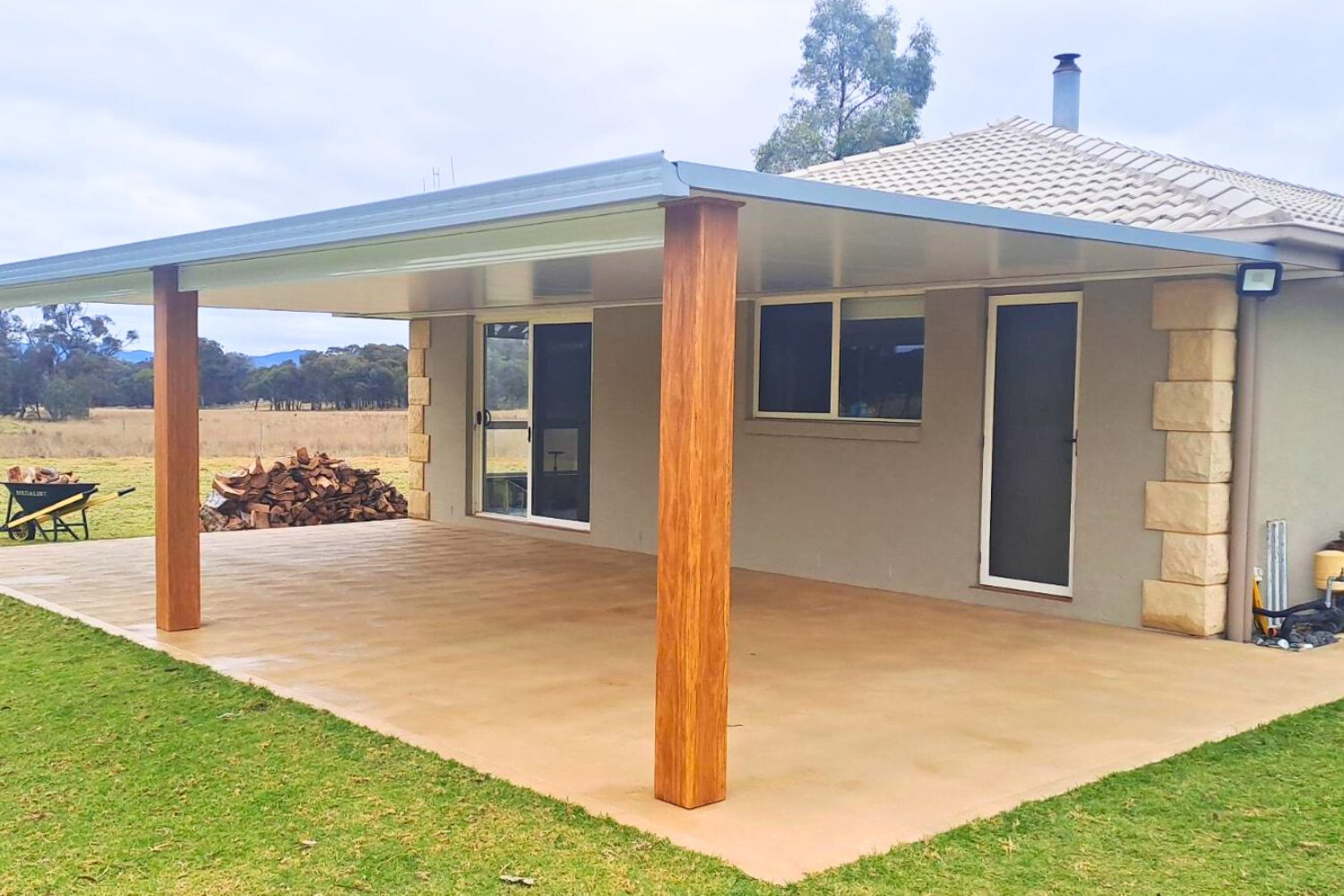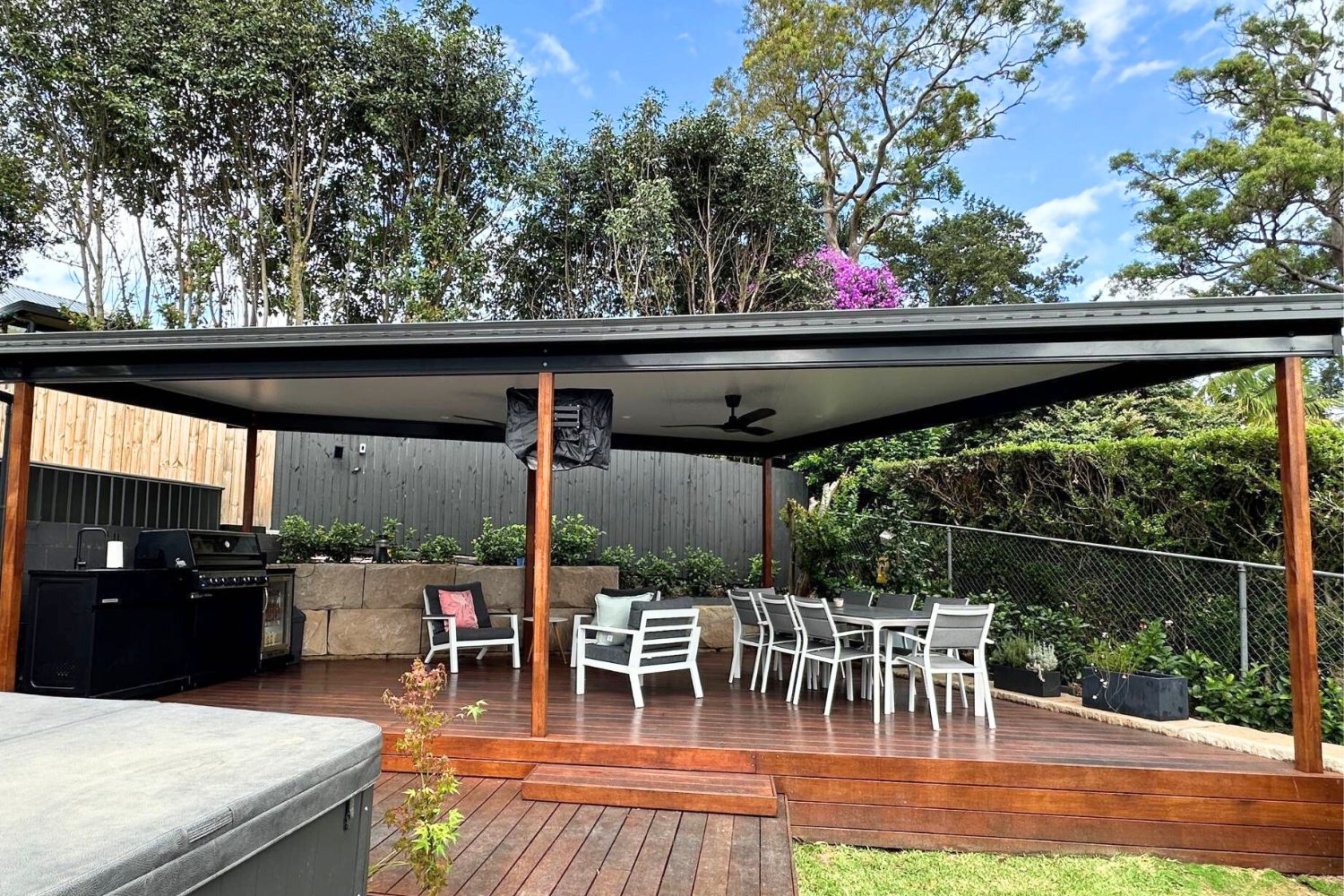Enhancing your outdoor space with a patio adds value to your home and creates a perfect spot for relaxation and entertainment. Selecting the right DIY patio kit is crucial to ensure it complements your home’s architecture and meets your functional needs. This guide will walk you through the essential considerations to help you make an informed decision.
1. Assess Your Available Space
Before selecting a patio kit, it’s vital to evaluate the area where you plan to install it.
- Measure the Dimensions: Accurate measurements of the length and width of your intended patio space will determine the appropriate size of the kit.
- Consider the Surroundings: Take note of existing structures, landscaping, and any obstacles like trees or utility lines that might affect the installation.
- Determine the Patio’s Purpose: Understanding how you intend to use the patio—be it for dining, lounging, or as a play area—will influence its size and design.
2. Understand the Types of Patio Roof Designs
The design of your patio roof significantly impacts both aesthetics and functionality. Here are some popular options:
Flat Roof Patios

Flat roof patios offer a sleek and modern appearance.
Advantages:
- Simplicity: Their straightforward design makes them easier to construct and often more cost-effective.
- Versatility: They can seamlessly attach to most home styles.
Considerations:
- Drainage: Ensure proper drainage solutions are in place to prevent water accumulation.
Gable Roof Patios
Featuring a pitched roof, gable patios provide a spacious feel.
Advantages:
- Ventilation: The elevated design allows for better air circulation, keeping the area cooler.
- Aesthetic Appeal: Adds a classic look that complements various architectural styles.
Considerations:Complexity: May require more intricate construction compared to flat roofs.
Combination Roof Patios
Combine Flat roofs and Gable roofs into a joined structure, giving the best of both worlds.
Advantages:
- Variety: Offers the advantages of Gable and Flat roofs in different areas of your backyard.
- Grand Design: Can provide an incredible fully furnished extension to any home.
Considerations:Additional Support: Due to combination roofs typically being larger in scope, consider having additional help when attempting to DIY one.
3. Consider Attachment Styles
How your patio attaches to your home influences both stability and aesthetics.
Attached Patios:

Advantages:
- Integration: Connects directly to your home’s structure, providing a seamless transition between indoor and outdoor spaces.
- Support: Utilises the existing building for support on one side, which can be cost-effective.
Considerations:
- Option Variety: A large number of different attachments are available to suit any unique DIY kit’s requirements, including (but not limited to):
- Fascia Attachments for seamless integration with your home’s roof line.
- Flyover Attachments for tall standing patio roofs providing airflow and space.
- Brick Wall Attachments for two-story homes, where other options are not possible.
- Stud Wall Attachments for another practical option, used where necessary.
Freestanding Patios:
Advantages:
- Flexibility: Can be placed anywhere in your yard, independent of the house.
- Design Freedom: Offers versatility in design and placement, ideal for creating separate outdoor retreats.
Considerations:
- Post Attachments: Consider where your posts will be placed, with careful emphasis onto concrete slabs.
4. Evaluate Customisation Options
Personalising your patio ensures it meets your specific needs and complements your home’s style.
- Colour Choices: Select colours that harmonise with your home’s exterior. To see our catalogue of colours for frame, roof and gutters visit one of kits on our online shop and select a roof profile.
- Roofing Profiles: Different profiles can enhance the visual appeal and match existing architectural elements. Click here to see our guide to selecting the right roof profile.
Additional Features: Consider integrating elements like skylights for natural lighting, down-lights or fans.
5. Review Local Building Regulations
Before commencing your project, it’s essential to:
- Check Permit Requirements: Many local councils require permits for patio constructions. Ensure you obtain all necessary approvals.
- Adhere to Building Codes: Compliance with local building standards guarantees safety and legality.
- Consider Environmental Factors: Account for local climate conditions, such as wind loads and exposure, to ensure your patio’s design is suitable.
6. Plan Your Budget
A clear budget helps in selecting a patio kit that offers the best value without compromising on quality.
- Cost of the Kit: Evaluate different designs and materials to find an option that fits your financial plan.
- Installation Expenses: While DIY kits are designed for self-installation, consider any additional tools or assistance you might need.
7. Utilise Available Resources
Patios Wholesale offers a range of services to assist you:
- Guides and Tutorials: Access detailed construction drawings to aid in the building process.
- Customer Support: Reach out for expert advice to ensure your patio meets your expectations.
- Customisation Assistance: Work with professionals to design a patio that aligns with your lifestyles needs and wants.
Discuss Your DIY Patio Build with Us
If you’re ready to start planning your DIY patio or have any questions along the way, our team at Patios Wholesale is here to help. We offer expert advice on selecting the right materials and design to fit your space, and we can guide you through every step of the process.
Contact us today to discuss your patio build and make your outdoor space exactly what you’ve envisioned!

